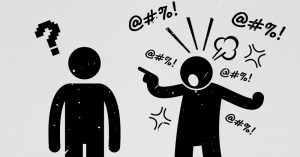A14
The objective of this artifact was to take the subjective happiness scale and then determine what my score was from each statement. I do not think that measures such as this truly capture happiness. I think that happiness encompasses so many things, that it can be documented in so few statements. I think that culture influences the extent of happiness that someone has in their life. We are taught that gaining money, material possessions, relationships, etc. will make us happy. I personally think that happiness occurs due to external things such as people places and events. However, the feeling of joy is internal, and comes when you find peace in who you are and where you are at in your life. I would much rather attain the feeling of joy over the feeling of happiness. Joy is long-lasting, while happiness comes and goes.

A13
The objective of this artifact was to play the prisoner’s dilemma game to facilitate a greater understanding of social dilemmas. This game made me think about what I would really do in a situation where I had to either cooperate with the other individual or sell them out. You definitely have to have a strong confidence in the other individual to not cooperate. However, if the other individual is the one that is guilty, it is a duty to tell someone what they did. I think it would be interesting to include factors such as people that we are close to or people we don’t know being involved in this dilemma. If it was someone we knew, we would be more likely to cooperate with them because we wouldn’t want them to get in trouble. But, if it was someone we didn’t know, we would be more likely to sell them out because we don’t have any personal ties with them.

A12
The objective of this artifact was to circle statements that I believed indicate aggression. The items that I believed most indicate aggression are harm to living and nonliving things, acts involving animals other than humans, and killing for sport. I think that a person can take out aggression on anything, living or nonliving. Sometimes people have built up anger because of a person, and think that it is more acceptable to take out their aggression on an animal. It almost gives them a sense of satisfaction that they were able to inflict pain on an animal like someone had inflicted on them.

A11
The objective of this artifact was to write down the initials of people that I know, and then write down whether I think they are happy/unhappy and selfish/unselfish. I then had to code the number of people who fell into each of the four cells based on happy/unhappy and selfish/unselfish rating. The pairing with the greatest tally was happy and unselfish. I think people rarely perceive selfishness and happiness together because selfishness has a negative connotation while happiness has a positive connotation. However, there was a study done that showed selfish people are more happy than unselfish people, because they don’t worry about the feelings of others. It seems that happiness decreases when we put into the equation the perspectives of others.

A8
The objective of this artifact was to assign stereotypes for each ethnic and racial group that best described them. I then had to compare my results with those found by Katz and Braly (1933) and Gilbert (1951). I don’t think stereotypes have changed overtime. I think that they are woven into society, even though some people say that they are gone. However, I do think that the content of the stereotypes that exist are changing. Over the years, our society has become increasingly diverse, and more accepting of people from different backgrounds. It is also helpful when people become exposed to each others ideas and points of views, so that they can understand that the stereotypes they believed in are actually incorrect. In all reality, a stereotype can be applied to any individual, no matter who they are. It is only when someone observes a trend in a specific group, where they apply that stereotype to that group. Sometimes people can’t see beyond what is standing in front of them, which causes them to continue to believe in their unjustified views.
